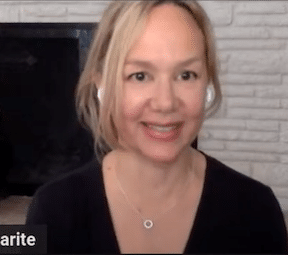If done right, a novel’s first page can be a powerful ally to generate sales. On the other side of that coin, your first page can be a powerful deterrent for readers if it misses its mark.
So, how do you make sure that your first page, or first scene, captures the readers’ attention and hooks them into the story? That was the topic of the latest First Draft Friday chat I had with editor Tex Thompson, who describes herself as a “literary locksmith” of fiction. Here’s a video replay of our chat, which is full of actionable tips.
Tex and I discuss a few ways to sharpen up your opening scenes, including:
#1 – Catch the reader off guard with an unexpected emotion
Nothing awakens my reading radar like a grieving widow at a funeral who steps aside for privacy and breaks into a smile. Unexpected emotion can be a great hook, and we discuss examples and use of this strategy in our chat.
#2 – Be light with the exposition (aka explanation)
It can be tempting to share everything about your world or your characters at the beginning, but a hefty explanation of scene, surroundings, backstory, or situation should be saved to weave into later chapters. Tex discusses the reasoning behind this, and how to write exposition effectively, in the chat.
#3 Don’t rush past the build-up
Authors live in constant fear of boring the reader, which can cause us to lead with an exciting moment of mayhem, explosions, dramatic events or a dead body. But those moments can often fall flat if the reader isn’t aware of the significance of the events, or isn’t yet emotionally invested enough to care about the occurrence.
Tex and I discuss examples and tips that will help you strike a balance between hooking the reader and underwhelming them with misplaced action.
#4 Set expectations with your reader
That first scene (or first collection of scenes) is your opportunity to give your reader an expectation of what to expect in the book. For example, if you’ll be jumping between two POVs or time frames, start doing that early in the book so the reader understands what is to come.
Watch the video for more examples and explanations of why and how to use this. As an added bonus, we cover several viewer questions that can help you dive into these concepts and look at your opening scenes in a fresh light.
Each month we hold new First Draft Friday video chats. If you want more great tips on craft, you can view past and upcoming chats here.
Want to know what Marlowe, our A.I. editor, thinks of your novel? Click here to see examples of her feedback and submit your own manuscript. The basic membership level is completely free.
Subscribe to our First Draft Friday podcast on Apple Podcasts.
Transcript of my conversation with Tex Thompson
(Coming)







Fantastic discussion…………..
Thanks Phyllis!